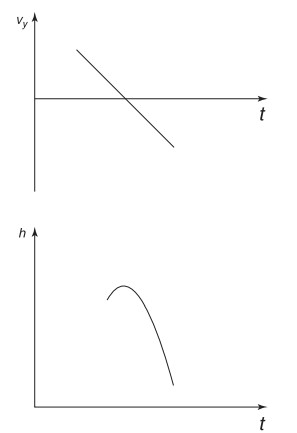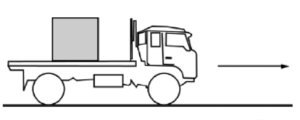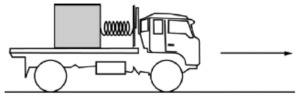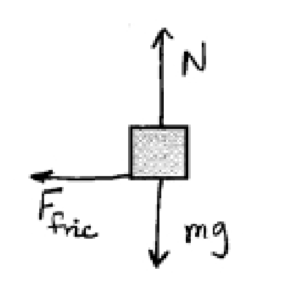Question
An elevator ride consists of the following portions.
a. Initially, the elevator is on the ground floor and quickly speeds up in the upward direction on its way to the top floor.
b. Most of the trip upward is at a constant velocity. c. Suddenly, near the top floor, the elevator comes to a stop just in time for the top floor.
d. Now the button for the first floor is pressed, and the elevator speeds downward suddenly.
e. Most of the trip downward is spent at constant velocity.
f. Suddenly, at the very bottom, the elevator comes to a stop.
(a) Draw a qualitative free-body diagram (showing the relative vector sizes) for each portion of the elevator ride as experienced by a passenger. Next to each, describe how the person would feel (normal, heavier than usual, lighter than usual, etc.).
(b) Explain the difference among the passenger’s mass, gravitational weight, and apparent weight throughout the trip. When (if ever) are these the same, and when (if ever) are they different? Which quantities change during the trip, and which ones do not?
(c) Describe what would happen if, on the way up (during step (b)), the cables were to break. Ignore any frictional effect between the elevator itself and the elevator shaft. Be sure to include a discussion of the relative motion of the elevator car and the passenger. Your answer should include a discussion or sketch of the height above ground, the velocity, and the acceleration experienced by the passenger from the time of the break until the end of the motion.
(d) Sketch the expected behavior of the person’s height as a function of time for situation (c) above. Also sketch the person’s \(V_{y}\) as a function of time as well.
▶️Answer/Explanation
Ans:
(a) 





(b) A person’s mass is a measure of his or her inertia. This value does not change due to acceleration or changes in location. Gravitational weight is a force due to the interaction of the person’s mass and the planet on which he or she is standing (including the distance between their centers). Although technically this value is slightly smaller as you get higher above sea level, the differences within a building on Earth are negligible. Apparent weight is the contact forces your body experiences, which give you your subjective experience of “weight.” In this case, the normal force and the changing values of the normal force explain the changes the person would experience on the elevator ride.
(c) The elevator and passenger would experience free fall. The only force would be the downward mg , and the normal force would be zero. Hence, the person would feel weightless. Since the car was on the way up when the cables broke, both passenger and elevator would maintain the same relative velocity to each other as both continued upward, slowed down, and then reversed direction and continued to speed up while falling. The entire time, the passenger would feel weightless.
(d) 
Question

A 4700 kg truck carrying a 900 kg crate is traveling at 25 m/s to the right along a straight, level highway, as shown above. The truck driver then applies the brakes, and as it slows down, the truck travels 55 m in the next 3.0 s. The crate does not slide on the back of the truck.
(a) Calculate the magnitude of the acceleration of the truck, assuming it is constant.
(b) On the diagram below, draw and label all the forces acting on the crate during braking.

(c)
i. Calculate the minimum coefficient of friction between the crate and truck that prevents the crate from sliding.
ii. Indicate whether this friction is static or kinetic.
____ Static ____Kinetic
Now assume the bed of the truck is frictionless, but there is a spring of spring constant 9200 N/m attaching the crate to the truck, as shown below. The truck is initially at rest.

(d) If the truck and crate have the same acceleration, calculate the extension of the spring as the truck accelerates from rest to 25 m s in 10 s.
(e) At some later time, the truck is moving at a constant speed of 25 m/s and the crate is in equilibrium. Indicate whether the extension of the spring is greater than, less than, or the same as in part (d) when the truck was accelerating.
___ Greater ___ Less ___ The same
Explain your reasoning.
▶️Answer/Explanation
Ans:
(a) d = vit + ½ a t2 (55) = (25)(3) + ½ a (3)2 a = – 4.4 m/s2
(b) FBD 
(c) using the diagram above and understanding that the static friction is actually responsible for decelerating the box to match the deceleration of the truck, we apply Fnet
Fnet = ma
– fs = – μsFn = ma – μs mg = ma – μs= a/g – μs= – 4.4 / 9.8 μs = 0.45
Static friction applied to keep the box at rest relative to the truck bed.
(d) Use the given info to find the acceleration of the truck a = ∆v / t = 25/10 = 2.5 m/s2
To keep up with the trucks acceleration, the crate must be accelerated by the spring force, apply Fnet
Fnet = ma Fsp = ma k∆x = ma (9200)(∆x) = (900)(2.5) ∆x = 0.24 m
(e) If the truck is moving at a constant speed the net force is zero. Since the only force acting directly on the crate is the spring force, the spring force must also become zero therefore the ∆x would be zero and is LESS than before. Keep in mind the crate will stay on the frictionless truck bed because its inertia will keep it moving forward with the truck (remember you don’t necessarily need forces to keep things moving)
Question
A crane is used to hoist a load of mass m1 = 500 kilograms. The load is suspended by a cable from a hook of mass m2 = 50 kilograms, as shown in the diagram above. The load is lifted upward at a constant acceleration of 2 m/s2.
a. On the diagrams below draw and label the forces acting on the hook and the forces acting on the load as they accelerate upward

b. Determine the tension T1 in the lower cable and the tension T2 in the upper cable as the hook and load are accelerated upward at 2 m/s2. Use g = 10 m/s².
▶️Answer/Explanation
Ans:
a. 
b. T1 is in internal system force and will cancel in combined equations. Using \(\sum \) Fexternal = mtotala gives
T2 – m1g – m2g = (m1 + m2)a, solving yields T2 = 6600 N. Now using \(\sum \) F = ma for the load gives
T1 – m1g = m1a and T1 = 6000 N
